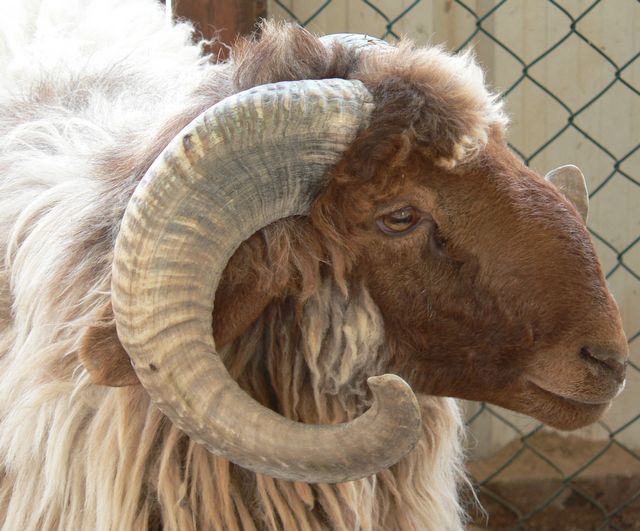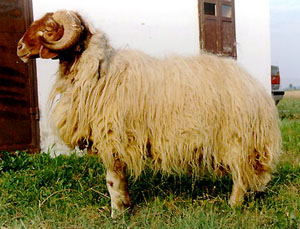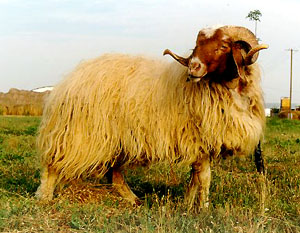Awassi Sheep
Also known as: Ivesti (Turkish), Arab, Baladi, Deiri, Shami, Gezirieh, Syrian
Varieties: Israeli Improved Awassi, Ne'imi, Shafali
The Awassi evolved as a nomadic sheep breed through centuries of natural and selective breeding to become the highest milk producing breed in the Middle East. The breed is one of the Near Eastern Fat-Tailed type. The average ewe has single lactations over 300 liters (650 pounds) per 210 day lactations above 750 liters (1625 pounds). As a comparison the lactation of the average U.S. sheep breed is about 100-200 pounds per lactation.
The breed is calm around people, easy to work with and easily milked. When machine milked, they can be milked in 4-6 minutes. The breed also has the advantage of natural hardiness and grazing ability. The breed is well suited to a grazing production system as well as a confinement operation.
The Awassi has a brown face and legs with the fleece varying in color from brown to white. Individuals can also be found with black, white, gray or spotted faces. The males are horned and the females are usually polled. The fleece is mostly carpet type with a varying degree of hair. According to World Animal Science Sheep and Goat Production (Elseviez Scientific Publication Co. 1982) the following measurements are representative of Awassi wool:
- Mean Fiber Diameter: 33 Micron
- Grease Fleece Weight: 1.9 Kilograms (4.2 pounds)
- Yield: 85%
- Staple Length: 16.5 cm
- Fleece Composition:
- Wool: 69%
- Hair: 24%
- Kemp: 7%
References
Correspondence, Elite Genetics, Waukon, IA
Mason, I.L. 1988. World Dictionary of Livestock Breeds. Third Edition. C.A.B. International. 348 pp.



